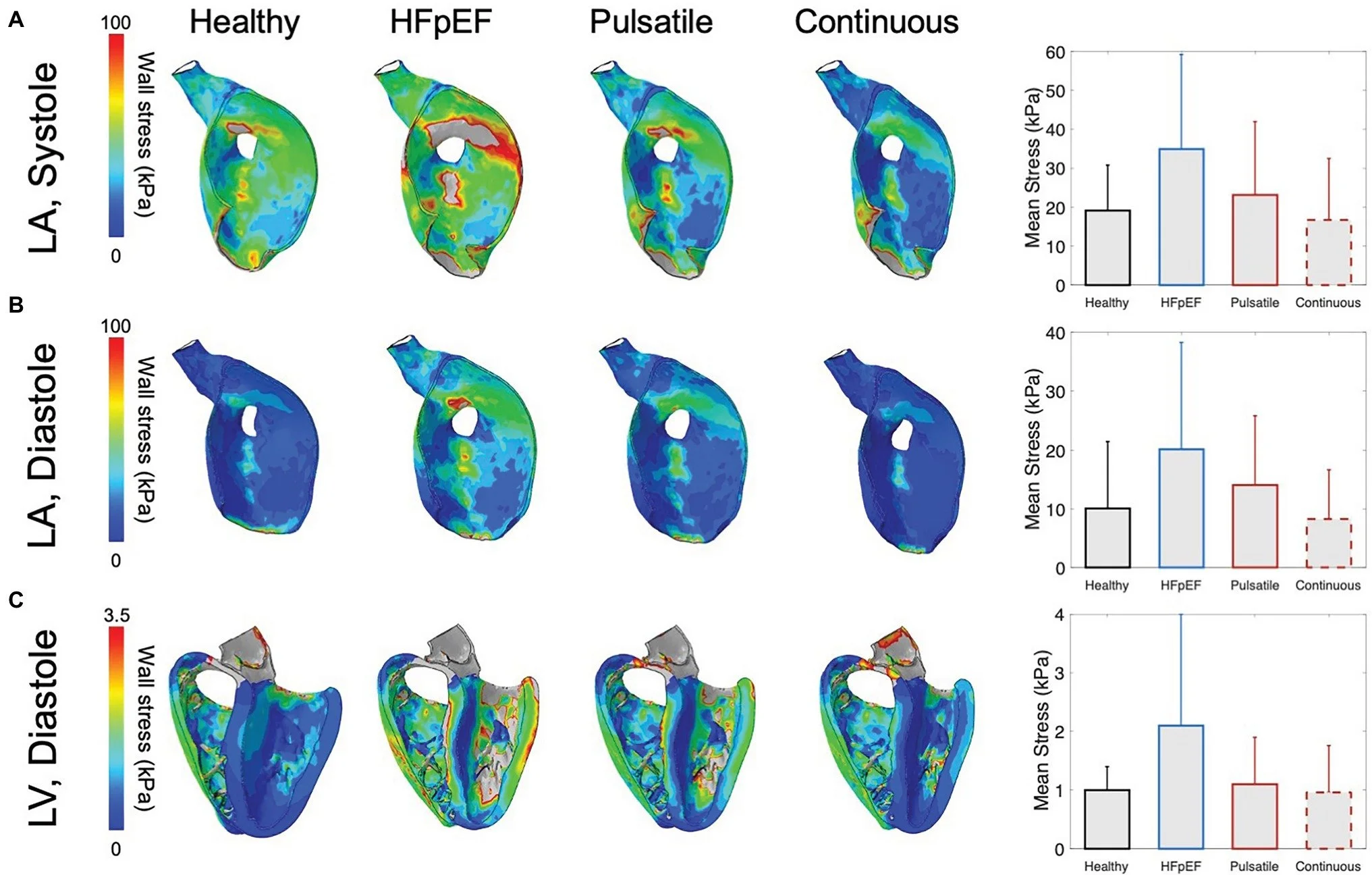
At Cardiost we believe healthier patients are the most important metric, fully recovered ones the ultimate goal.
Relevant peer-reviewed medical publications
-

Long-Term Outcomes in Ventricular Assist Device Outflow Cannula Anastomosis to the Descending Aorta
Background - Left ventricular assist device (LVAD) implantation via thoracotomy with outflow cannula anastomosis to the descending aorta is an alternative implantation technique that uses a single incision and avoids anterior mediastinal planes. We evaluated long-term survival and hospital readmissions after LVAD implantation via thoracotomy with outflow cannula anastomosis to the descending aorta.
-

Left Atrial Decompression Pump for Severe Heart Failure With Preserved Ejection Fraction: Theoretical and Clinical Considerations
Background - Although HFpEF arises from different etiologies, 1 hallmark of all forms of this syndrome is a small or minimally-dilated left ventricle (LV). Consequently, the use of traditional mechanical circulatory support in end-stage patients has been difficult. In contrast, HFpEF is also characterized by a large LA. The purpose of this study was to provide insight into the potential for left atrium (LA) to aortic mechanical circulatory support as a treatment for patients with heart failure with preserved ejection fraction (HFpEF).
-

Device-Based Solutions to Improve Cardiac Physiology and Hemodynamics in Heart Failure With Preserved Ejection Fraction
Background - The prevalence of heart failure with preserved ejection fraction among patients who present with symptoms of heart failure is approximately 50%. Pharmacologic therapy has not conclusively shown benefits in morbidity and mortality in clinical trials. Although it represents an active area of research, no device-based therapy has received regulatory approval for the treatment of HFpEF. Approaches such as atrial shunts, left ventricular expanders, mechanical circulatory support devices, and neurostimulators are at various stages of development.
-

Can mechanical circulatory support be an effective treatment for HFpEF patients?
Background - Heart failure with preserved ejection fraction (HFpEF) is increasing in prevalence and represents approximately 50% of all heart failure (HF) patients. Patients with this complex clinical scenario, characterized by high filling pressures, and reduced cardiac output (CO) associated with progressive multi-organ involvement, have so far not experienced any significant improvement in quality of life or survival with traditional HF treatment. Left ventricular assist devices (LVAD) have offered a new treatment alternative in terminal heart failure patients with reduced ejection fraction (HFrEF), providing a unique combination of significant pressure and volume unloading together with an increase in CO. The small left ventricular cavity in HFpEF patients challenges left-sided pressure unloading, and new anatomical entry points need to be explored for mechanical pressure and volume unloading. Optimized and pressure/volume-adjusted mechanical circulatory support (MCS) devices for HFrEF patients may conceivably be customized for HFpEF anatomy and hemodynamics. We have developed a long-term MCS device for HFpEF patients with atrial unloading in a pulsed algorithm, leading to a significant reduction of filling pressure, maintenance of pulse pressure, and increase in CO demonstrated in animal testing. In this article, we will discuss HFpEF pathology, hemodynamics, and the principles behind our novel MCS device that may improve symptoms and prognosis in HFpEF patients. Data from mock-loop hemolysis studies, acute, and chronic animal studies will be presented.
-

A Multi-Domain Simulation Study of a Pulsatile-Flow Pump Device for Heart Failure With Preserved Ejection Fraction
Background - Mechanical circulatory support (MCS) devices are currently under development to improve the physiology and hemodynamics of patients with heart failure with preserved ejection fraction (HFpEF). Most of these devices, however, are designed to provide continuous-flow support. While it has been shown that pulsatile support may overcome some of the complications hindering the clinical translation of these devices for other heart failure phenotypes, the effects that it may have on the HFpEF physiology are still unknown. Here, we present a multi-domain simulation study of a pulsatile pump device with left atrial cannulation for HFpEF that aims to alleviate left atrial pressure, commonly elevated in HFpEF. We leverage lumped-parameter modeling to optimize the design of the pulsatile pump, computational fluid dynamic simulations to characterize hydraulic and hemolytic performance, and finite element modeling on the Living Heart Model to evaluate effects on arterial, left atrial, and left ventricular hemodynamics and biomechanics. The findings reported in this study suggest that pulsatile-flow support can successfully reduce pressures and associated wall stresses in the left heart, while yielding more physiologic arterial hemodynamics compared to continuous-flow support. This work therefore supports further development and evaluation of pulsatile support MCS devices for HFpEF.


